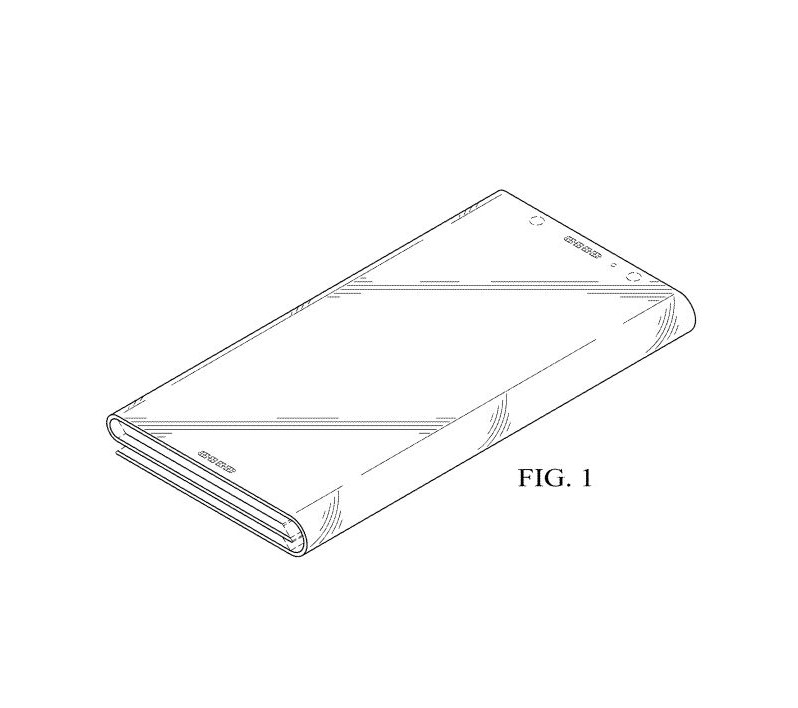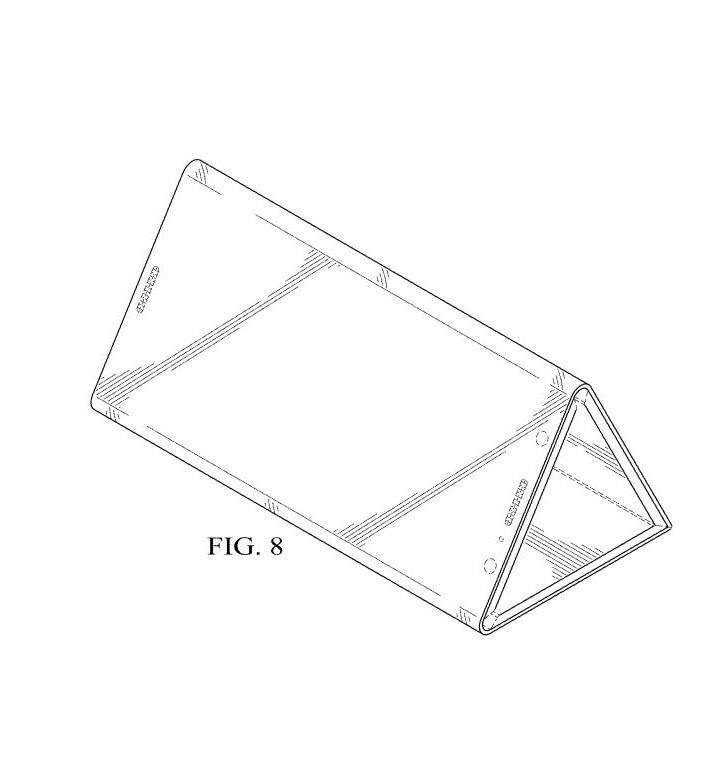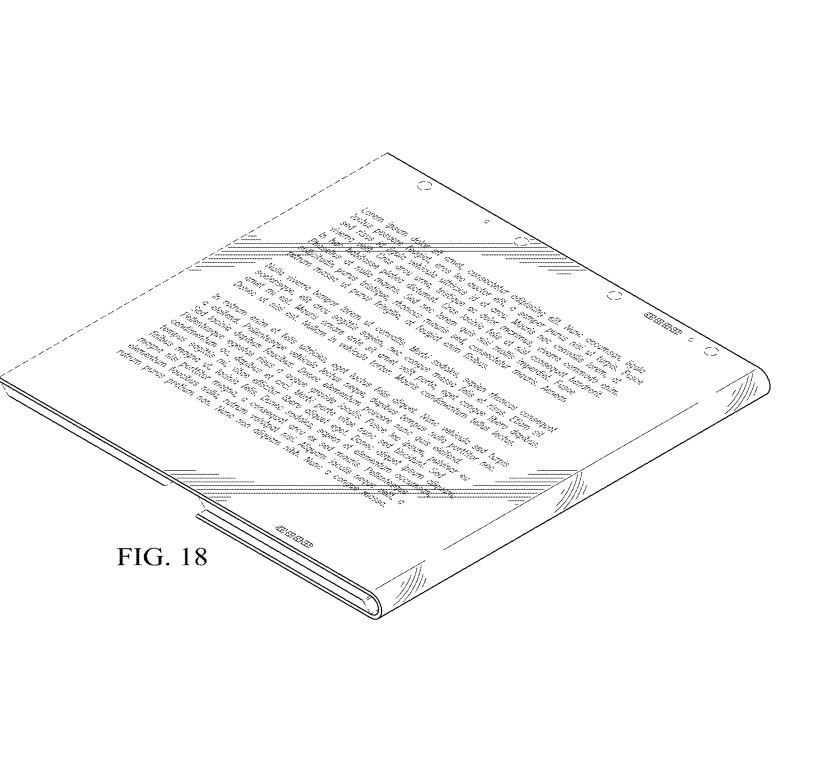Be it with products from Samsung, or Royole, there’s no doubt that foldable smartphones are the next big thing in technology. And now comes news that Intel could also be considering a fairly unique foldable device. A 2017 patent from the company first uncovered by the Dutch website Lets Go Digital envisions a phone that can fold out to become a tablet PC.
Originally published back in 2017, the patent for “Electronic Device with Foldable Display Panels” is packed full of sample drawings showing a device with three displays, which when fully unfolded out can span to become one single tablet screen. Additionally, when folded together in a closed orientation, the three screens can also become more compact as one, similar to a more pocketable smartphone.

The patent even shows the folding device support for a stylus, which can be housed and locked in one of the corner folds. That could be meant to tie in with the other foldable mode that allows the device to sit on a table with the screens bent in a triangle format, for showcasing presentations or videos.
Intel’s patent is so detailed that Lets Go Digital managed to create concept images showing the device in action. The conceptual images showcase elements of Windows 10, which it has been suggested that Microsoft is planning to adapt for foldable devices like this one.
Intel has previously showcased folding and bending devices. Known as Tiger Rapids, its concept for the dual-screen folding PC was originally shown off over a year ago. We’ve since seen that partially come to life in Lenovo’s Yoga Book C930, which features a conventional LCD display on the top and an e-ink screen inside.
Of course, Intel’s latest patent might not go on to be translated into a final product, but if it does eventually come to fruition, this could be a disruptive device. Still, Intel is not alone, and Lenovo could also be considering a foldable laptop, according to a recent patent of its own. As for Microsoft, its Andromeda folding device might be on the shelf for now, but plans have indicated the firm could be working on a foldable dual-screen Surface for late 2019.
Code-named Centaurus, that would be Microsoft’s first new Surface form factor since the introduction of the 2-in-1 back in 2012. It also is planning on releasing a standalone Surface Studio monitor with modular functionality for 2020.





